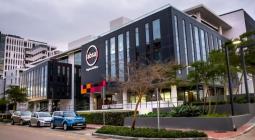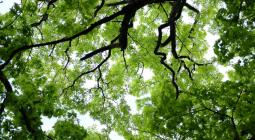Interview with the IFC: “EDGE has already certified $73B in green real estate assets”
Eco-construction approaches combining energy efficiency and technology are being promoted by property developers and development partners alike. Such is the case of the World Bank Group. In this interview with Afrik21, Cheick-Oumar Sylla, Director of North Africa and the Horn of Africa at the International Finance Corporation (IFC), and his colleague Lenore Cairncross, Head of Green Building, discuss the advances and challenges facing this sector on the African continent since the launch of EDGE certification.
Eco-construction approaches combining energy efficiency and technology are being promoted by property developers and development partners alike. Such is the case of the World Bank Group. In this interview with Afrik21, Cheick-Oumar Sylla, Director of North Africa and the Horn of Africa at the International Finance Corporation (IFC), and his colleague Lenore Cairncross, Head of Green Building, discuss the advances and challenges facing this sector on the African continent since the launch of EDGE certification.
Benoit-Ivan Wansi: Before joining the IFC, you piloted green building initiatives on behalf of several housing impact funds. How do you see green building financing in Africa today?
Lenore Cairncross: In most African countries, because there is a lack of supportive policies and regulations, there still needs to be more awareness and education about the benefits of greener energy and carbon-saving options for new buildings and retrofitting existing buildings. There is a perception that green building certification is expensive and over-complicated, which means that adoption of these practices is still relatively lower, so we’re still playing catch-up in many ways. Industry education needs to go hand-in-hand with government support and incentives, including regulation and policy support and greater access to financing. None of these elements can work in isolation.
Given these challenges, IFC has recognised that for market transformation to be effective, we have created a four-pronged approach, working with governments to provide incentives and policy reforms, with developers to provide technical support to certify their projects, with banks to create green financial products that can encourage developers to build green, and home owners to buy green homes, as well as with design professionals such as architects and engineers to provide them with the technical knowledge to design a green building.
What about EDGE certification?
Lenore Cairncross: We have also created the online EDGE App that is freely available to enable the assessment of a building design, whether it meets the EDGE standard and what measures can be implemented to achieve this.
While green building finance is growing across the continent, investors need reassurance that the projects they invest in are green before they qualify for funding, hence the need for a globally recognised green building certification standard, such as EDGE, which includes a measurement tool to quantify carbon savings.
Cheick-Oumar Sylla : The Grand Egyptian Museum (GEM) whose official inauguration is scheduled for spring 2024 joins the family of ‘EDGE’ infrastructures. What is the purpose of this certification?
The Grand Egyptian Museum going green – and becoming the first EDGE Advanced certified museum in Africa and the Middle East – is a powerful testament to Egypt’s growing commitment to sustainability. The certification supports greening the construction sector and providing both resource-efficient and cost-effective operations. It also reaffirms the museum’s commitment to sustainability, in alignment with Egypt’s Vision 2030 for clean energy.
And in concrete terms?
Cheick-Oumar Sylla : Through the climate-smart design and construction, the museum saves more than 60% in energy costs and reduces water use by 34% compared to a conventional building of its type and size. These measures translate into energy savings equivalent to removing over 400 gasoline-powered vehicles from the streets of Cairo for one year, and water savings equivalent to 63.4 million liters of Nile River water annually.
Having validated the certification, can you tell us what motivated IFC’s choice? And what does this mean for the Egyptian building sector?
Cheick-Oumar Sylla : The EDGE Advanced certification is part of IFC’s Green Building project, in partnership with Egypt’s Housing and Building National Research Center (HBRC), which aims at enhancing the green buildings ecosystem in Egypt and promoting the certification of construction projects that foster cost-effective, resource-efficient design choices. The partnership focuses on increasing the public sector’s awareness of the economic case for certified green buildings, developing skills to implement green incentive schemes, and supporting the local development of green building stock.
The GEM, the world’s largest archeological museum dedicated to one civilization: that of Ancient Egypt, and home to more than 100,000 artifacts, being EDGE Advanced certified demonstrates that even large-scale, iconic projects can prioritize sustainability. This project showcases the great impact public and private partnerships can create for a greener future.
Are there any other development partners involved in your green building initiatives?
Cheick-Oumar Sylla : IFC’s Green Building project in Egypt is supported by the Switzerland’s State Secretariat for Economic Affairs (SECO), while the UK Government supports EDGE program on the global level.
How much does the green building market cost, and why isn’t it as dynamic (on a continental scale) as other sectors of the ecological transition?
Lenore Cairncross: EDGE started in South Africa in 2015 and has grown across the continent to over 7.4 million m2 of real estate certified to date. And while we don’t have the exact figures for green building financing in Africa, globally, IFC has invested $12.2 billion in green buildings and EDGE has certified $73 billion in green building assets with 1.5 million tCO2/year saved.
Most of the continent’s major real estate companies are based in South Africa. This is the case of the Absa banking group, to which the IFC has lent $236 million in the second half of 2023 to finance resource-efficient buildings. Can you describe the process and purpose of such a partnership?
Lenore Cairncross: IFC’s investment in Absa for $236 million was through a program called the Market Accelerator for Green Construction (MAGC) that the UK Government also funds. The MAGC program provides concessional financing to support the growth of the green building market by providing concessions passed on to the market through green financial products such as green mortgages or green developer loans, where the borrower receives a concession to encourage the adoption of green building practices.
IFC supports the private sector, particularly in fintech, infrastructure, renewable energy, and healthcare. Where does eco-construction fit in with all these sectors, in terms of budget (2024) and prospects within the World Bank subsidiary?
Cheick-Oumar Sylla : At IFC, climate is indeed at the core of everything we do. As part of the World Bank Group’s Climate Change Action Plan for 2021-2025, IFC is keen on leveraging private sector solutions for climate action across diverse sectors and accelerating the development of bankable opportunities for decarbonization and climate change adaptation. In 2022, the WBG published its Egypt Climate and Development Report (CCDR) to explore the challenges and opportunities for improving the alignment of Egypt’s development goals with its climate ambition. The CCDR showed that a large portion of emissions takes place in cities, identifying a number of targeted interventions to strengthen climate resilience in cities and contribute to GHG mitigation; among which is mainstreaming levers for resilient and green buildings.
In Egypt, IFC has invested and mobilized more than $2 billion in climate-related projects since 2016, focused on renewables, green financing to financial institutions, industrial and commercial renewable energy, and green buildings.
What mechanisms do you use to encourage less influential real estate developers (small structures and start-ups) to seek EDGE certification? For example, do you organize training workshops at companies, visit construction sites or work with local authorities?
Lenore Cairncross: IFC’s EDGE team provides workshops to introduce EDGE certification to developers from small to large. We also work with local associations for design professionals and provide training to introduce them to green building design. We have focus countries to support certification across Africa, namely, South Africa, Ghana, Nigeria, Kenya, Cote d’Ivoire, Senegal, and Egypt. We have provided EDGE training to local government officials at various levels in different countries and have worked with partners in the green building movement, including green building councils, to encourage the adoption of green construction.
In 2022, Francis Kéré of Burkina Faso won the Pritzker Prize, considered to be the Nobel Prize for architecture. This distinction is a first for an African. How did you interpret it?
Lenore Cairncross: Having the first African architect to receive the Pritzker Prize was wonderful. His building designs are beautiful and incorporate the heritage of traditional building architecture and sustainable design using local materials and local construction techniques. It would be excellent for more architects to adopt this type of design that blends our local African construction techniques and materials, improving sustainability and naturally adapted to local climatic conditions, instead of many of the kinds of designs imported from colder climates that focus a great deal on glass and other materials that are not best adapted to our African climate.
Cover photo: By AFRIK21




